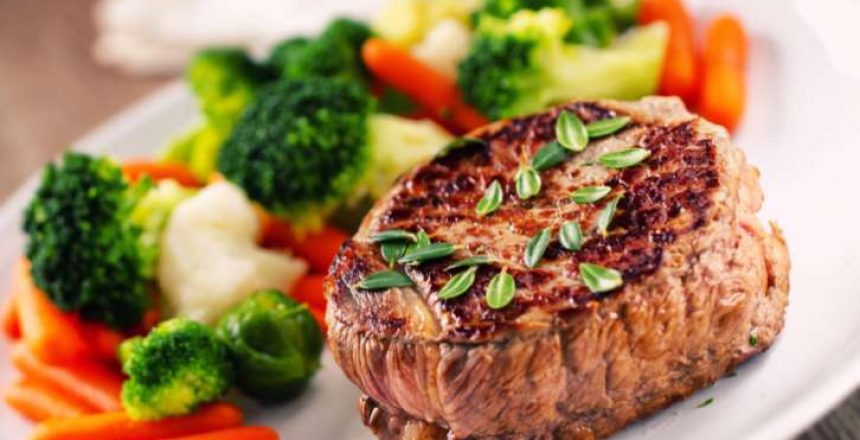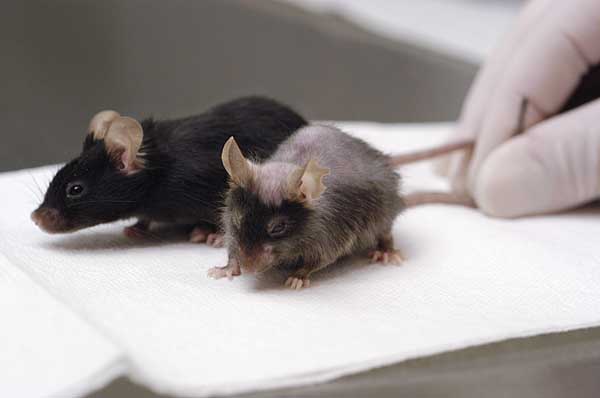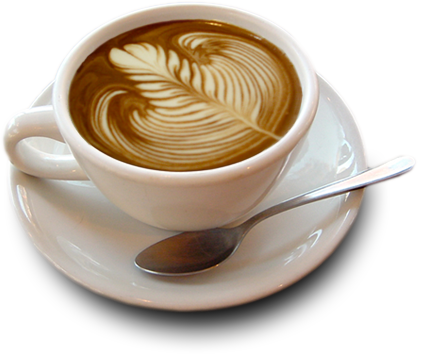Intermittent fasting, discussed many times on this site, is a potent anti-aging and health-promoting intervention. It lowers insulin and glucose levels, and therefore can be used to treat diabetes and for fat loss. Nevertheless, fasting requires going without food, which many people are unwilling — or possibly unable, in some cases — to do. Is there a workaround? Yes… here’s how to fast without fasting.
The effects of fasting
What does intermittent fasting do that’s so beneficial? It appears that the main way that short-term fasting benefits health is by lowering insulin levels. The mobilization of fat stores — lipolysis — that greatly accelerates during fasting appears to be due to lower insulin levels, and not to changes in blood glucose (sugar) levels. 1
Besides increasing lipolysis or fat-burning, lowering insulin levels also greatly increases the rate of autophagy, the cellular self-cleansing process that rids cells of junk and that is so important to fighting aging.
Fasting also increases the production of ketones, which benefit metabolic and brain health.
So how can you get these effects of fasting without fasting?
You do this through restricting carbohydrates.
Carbohydrate restriction gives many of the benefits of fasting
Carbohydrate restriction, i.e. a very low carbohydrate ketogenic diet (VLCKD), or in this case, a zero-carbohydrate diet, was found to account for about 70% of the metabolic response to fasting. That is, merely refraining from eating carbohydrates gives most of the benefits of fasting in terms of lower glucose and insulin. 2
In another study, a group of volunteers fasted for 84 hours (3.5 days), or fasted for that length of time and received a lipid infusion such that they got all the calories they needed. The scientists found that there were no differences in “plasma glucose, free fatty acids, ketone bodies, insulin, and epinephrine concentrations” between fasting and non-fasting conditions.3
The authors conclude, “These results demonstrate that restriction of dietary carbohydrate, not the general absence of energy intake itself, is responsible for initiating the metabolic response to short-term fasting.” [My emphasis.]
Now, I might not go so far as these scientists as to say that the entire response to intermittent fasting is due to absence of dietary carbohydrate. Another study cited above found that carbohydrate restriction accounted for about 70% of the response to fasting, not 100%.
There may be other parameters that the study didn’t observe, IGF-1 for example, or increased rates of autophagy. But it’s clear that restricting carbohydrates accounts for a lot of the changes seen in intermittent fasting.
I suspect that the additional benefits of fasting come from lack of protein intake.
Radically restricting carbohydrates results in the production of ketones, and ketones stimulate autophagy, which is one of the important benefits of fasting.4 So here’s another way that reducing carbs effectively imitates fasting.
Intermittent fasting also works by reproducing many of the effects of calorie restriction, the most robust life-extending intervention known. 5
And in turn, restriction of carbohydrates is the most effective way to mimic calorie restriction.6
The conclusion must be that carbohydrate restriction confers most of the benefits of intermittent fasting.
What if you combine a very-low carbohydrate diet with bouts of intermittent fasting? That’s exactly what I do, and it should give synergistic benefits.
If you start from a base of low-carb eating, and then fast for a period of time, this should more strongly induce ketosis and lower insulin levels, and more strongly increase the rate of autophagy and lipolysis (fat-burning).
How to implement a low-carbohydrate diet + intermittent fasting
The main source of dietary carbohydrates are refined grains and starches. These should be omitted entirely, so that means no bread, tortillas, pasta, breakfast cereal, rice, anything with sugar such as soda.
Large sources of carbohydrates are also found in starches such as potatoes.
Green leafy vegetables, while they contain carbohydrates, are such poor sources of them and so high in fiber that they may be eaten freely.
The main source of calories would consist of meat, eggs, cheese, cream, butter, yogurt (unsweetened, natch). If you drink alcohol, be moderate and stay with red wine and plain highballs, which have no sugar.
Don’t eat anything after dinner, and then again not until 16 to 18 hours have passed, say until 10 A.M. to noon the following day. That’s your fast.
You could do that daily, although if you lift weights, don’t begin a fast until at least 24 hours after your workout. When you lift weights, muscles are primed for growth, and need nutrients to do so. If you want to get those gains, you must feed your muscles.
On my current schedule of approximately twice a week workouts, I can still manage several 16-hour fasts a week.
Hopefully, I’m getting potent anti-aging and health-giving synergy between my low-carbohydrate way of eating and intermittent fasting.
PS: Check out my Supplements Buying Guide for Men. And fasting is an integral part of my anti-aging program, as you can read in my book Stop the Clock.
- Klein, S. A. M. U. E. L., et al. “Progressive alterations in lipid and glucose metabolism during short-term fasting in young adult men.” American Journal of Physiology-Endocrinology And Metabolism 265.5 (1993): E801-E806, Klein, S. A. M. U. E. L., O. Bryan Holland, and ROBERT R. Wolfe. “Importance of blood glucose concentration in regulating lipolysis during fasting in humans.” American Journal of Physiology-Endocrinology And Metabolism 258.1 (1990): E32-E39. ↩
- Nuttall, Frank Q., Rami M. Almokayyad, and Mary C. Gannon. “Comparison of a carbohydrate-free diet vs. fasting on plasma glucose, insulin and glucagon in type 2 diabetes.” Metabolism 64.2 (2015): 253-262. ↩
- Klein, S. A. M. U. E. L., and ROBERT R. Wolfe. “Carbohydrate restriction regulates the adaptive response to fasting.” American Journal of Physiology-Endocrinology and Metabolism 262.5 (1992): E631-E636. ↩
- Finn, Patrick F., and J. Fred Dice. “Ketone bodies stimulate chaperone-mediated autophagy.” Journal of Biological Chemistry 280.27 (2005): 25864-25870. ↩
- Mattson, Mark P., and Ruiqian Wan. “Beneficial effects of intermittent fasting and caloric restriction on the cardiovascular and cerebrovascular systems.”The Journal of nutritional biochemistry 16.3 (2005): 129-137. ↩
- Klement, Rainer J. “Mimicking caloric restriction: what about macronutrient manipulation? A response to Meynet and Ricci.” Trends in molecular medicine 20.9 (2014): 471-472. ↩














19 Comments
Hello Dennis, I want to ask if you are aware of a product called forskolin? Given the general subject of your site here, I think it may be interesting for you:
https://www.webmd.com/vitamins-and-supplements/forskolin-uses-and-risks
“Some research suggests that forskolin may aid in weight loss and muscle building. In one very small study, overweight and obese men took 250 milligrams of a 10% forskolin extract twice a day. After 12 weeks, they lost more body fat and had a greater increase in testosterone levels compared to similar men taking a placebo.”
Thanks, eah, aware in the sense that I’ve heard of it. I should take a closer look.
While some people certainly have good medical reasons not to take up fasting, the main obstacle for most people seems to be a mental block over the idea of not eating. The most frequent reaction I encounter is incredulity that I can go without eating from about 10pm to 6pm the next day without getting faint or “hangry”.
I started IF in 2008 after being dependent on regular carbohydrate energy boosts for pretty much all my life. It was astonishingly easy, and I’m not exactly a model of self-denial. The mid-morning/midday/mid-afternoon “dips” (occasionally verging on hypoglycemia) vanished completely, replaced by a steady-state feeling of mild alertness. Hunger is certainly present, but it becomes a low-level background noise that I can mostly ignore.
On the other hand, some days you do wake up hungry, and it was good to learn through this blog that you can take pure fat (like a spoonful of coconut oil) without breaking the beneficial fasting mechanisms.
I’ve been doing IF for a couple of months now, 7-days a week. Eating window is 11am – 6pm. No ill effects. I also lift weights, Starting Strength program with the 5-3-1 overlay, 3x week. I’m 68yo, no meds, some supplements, clean eating overall. Life is good.
I fast from 8:00 pm until at least noon M-F. I workout a couple of hours after dinner on M, Tu. and Th. Do you think that fasting regimen is counterproductive in terms of nutrient timing coupled with lifting?
It’s possible it could be. By “a couple hours after dinner” I’m not sure exactly what time that is. But as long as you eat well after the workout (or very shortly before) and go no more than 16 hours fasting, you should be OK. Be sure to get 1.2 g/kg of protein, and if you fast, you may need to consume a bit extra protein during feeding window to achieve this.
Thanks for the quick response. I usually eat dinner around 6:30 and workout within the next two hours. Definitely want to avoid catabolism but I feel much better fasting from breakfast. Incidentally, I was on atorvastatin for about 10 years. No CVD but my dad had a MI relatively early on. I had an episode of lone atrial fib and the cardiologist prescribed it as a prophylactic measure. I have weaned myself from it in the last year and now don’t take it at all. My HDL/Triglyceride ration has NEVER been better than my last lipid profile test. But total cholesterol was 236 and my LDL was 164. My GP went apeshit because I had failed to mention going totally off the atorvastatin. My rejoinder is that it’s the particle size of the LDL that matters and this wasn’t tested. Also, total cholesterol has been abandoned as an indicator of increased CVD risk even by the American Heart Association. My GP has asked me to get a calcium scan but apparently doesn’t know that atorvastatin has been linked to increased arterial calcium deposit. So if my scan shows arterial calcium build-up was this from the atorvastatin or LDL? What a mess. I have asked for a lipid panel that shows LDL particle size, etc. My, my how the medical profession lags!
Thanks heaps PD,
The pure fat hack is an amazing breakthrough. I was entirely comfortable with 24 hr water and sodium/potassium//magnesium fasts but srtuggled a bit with making it longer, i was mindful of your reply to one of my comments in which you clarified that autophagy peaks at 24 hrs but still continues with more prolonged fasting I was keen to make it so. I’m low bodyfat anyway despite consuming as many calories routinely to make healthy indivuduals grossly obese. (which I actually think is a sure sign of some kind of nutrient malabsorption problem anyway rather than the ‘healthy metabolism’ nonsense we hear so often) No health issues I’m aware of, Just the niggling concern over exactly where all those calories can be going. People always seem to think a ‘fast’ metabolism is a good thing. Not so sure.
But to cut a long story short, at that critcaL 24 hr hunger crisis a tbs o some pure fat and within half an hour I feel as if i could fast forever. ‘Three days is the longest I’ve gone and i found that after 48 hrs, I didn’t even need the pure fat crutch anymore. ‘So I suppose I was in strong ketosis by then.. I have no desire to lose lean muscle, so three days every five days is probably the fasting routine I’ll stick to for the foreseeable future . But getting over that 24 hr hunger ‘hump’ with a small amount of pure fat has been a revelation.
Also I found this:
https://journal.frontiersin.org/article/10.3389/fphar.2016.00100/full
Any comment?
And thanks again.
That;s great, Stuart, the fat Hack as you call it – well, it flows from learning about the processes of autophagy and insulin sensitivity. One reason I go for it is because I dislike black coffee and tea, so I need my cream.
One of your posts talked about the profound autophagic effects of ‘prolonged’ fasting (three days). As I mentioned, I have pretty low bodyfat . Your body has to get energy from somewhere during fasting. Ketones are obviously the best way for it to fuel itself in terms of promoting autophagy, and I just don’t have bodyfat to spare. So I’d lose muscle. Not desirable. Enough fat to prevent gluconeogenesis, my brain gets plenty of ketones and coffee tastes better. Sweet.
Speaking of which, do you happen to know whether green coffee beans have more phenolics than roasted coffee? Love the taste/aroma of roasted coffee Just curious.
Btw. did you know that the tea fat of choice in Nepal is rancid Yak butter. Yum
Have you ever looked at ‘resistant starch’ issue (e.g. cooled down potatoes/pasta and the reheated)? Would the food prepared in such a way qualify as low carb?
@Neven
I’m really interested in the fermentable fiber factor as it relates to a ketogenic diet. The retrograded starch (RS 3 ) even in potatoes that have been heated and re -cooled multiple times can never reach over about 10 % of the starch . So the other 90 % starch is just normal carbohydrate digested by your upper digestive tract (as oppsed to the resistant starch bit that can only be metabolized by gut bacteria (the ones in your colon). So cooled potatoes are out. But their are lots of other fermentable fiber types that are almost 100 % fermentable eg acacia gum, low sugar purified (long chain) inulin, Even ‘ high maize’ is only about 20% resistant starch – better than any whole food source of course, but not exactly low carbohydrate. Wheat dextrin (‘Benefibre’) is almost 90 fermentable, and in Australia anyway is relatively cheap,
But unfortunately ALL whole food sources of fermentable fiber are also high carb. Many vegetables are high in fibre, but it isn’t very fermentable -good ‘roughage’ , but next to useless as food for gut bacteria. Your would probably explode before you were able to eat enough low carb veges to provide enough ferrmentable fiber to indulge your colonic microbiome. They certainly wouldn’t starve, but they just won’t be very well fed.
There are a couple of standout indications of how much fermentable fibre (indigestible polysaccharides) you should be trying to provide your colonic bacteria with. One is breast milk , which provides an adult equivalent of about 130g /day, and the coprolite evidence from paleolithic humans which is also surprise surprise about 130g /day. But paleolithic humans (Even Cordain is finally admitting that he got this completely wrong) didn’t didn’t eat a low carb diet. Most of their food came from starchy tuberous roots. They certainly ate meat when they could catch it, It just wasn’t a very significant part of their diet.
None of the above is relevant to the mechanism of autophagy and maximum life span of course. Paleolithic humans just ate what was nutritious and available -starchy roots. Although they also probably intermittent fasted a lot too, in lean times, as do most animals in the wild.
I forgot to mention raw potato starch (Bob’s Red Mill in the U.S.) is a great source of RS2 resistant starch – about 80%. Unfortunately RS2 only feeds a limited range of colonic microbiota You need RS3 (from cooked and cooled starches – which also makes those sources very high carb) too for a well fed microbiome and/or fructans (artichokes, alliums etc.)
But if you’re happy to get your fermentable fiber (indigestible polysaccharides – of which RS is but one ) from supplements (which I for one certainly am ) eating low carb (even ketogenic levels of low carb) and having a well fed microbiome is really easy. If you’re not, a long term ketogenic diet seems to always end in gut dissarray Cyclical ketogenic diets on the other hand seem ideal. And if you really want to keep your gut microbiota churning out the butyrate (and other SCFA’s ) even while you’re in ketosis, do it with non whole food fermentable fiber. supplements.
I believe in theory it would be low carb, since resistant in this case means resistant to digestion. Only the gut microbes are supposed to be able to get it. I don’t think I would use large amounts of things like cooled down potatoes though if I were trying to go low carb – maybe a small amount of potato starch. But I admit to not having looked closely at this issue.
My point was that the ‘resistant to digestion’ amount of carbohydrate in a cooked and cooled potato is only a fraction (8 – 10 % depending on how many times you heat then cool it.) The rest isn’t resistant at all. Just plain old rocket fuel carbohydrate. I suppose it depends on your definition of low carb. And even the 8 – 10 % of the cooked and cooled potato’s starch that is resistant (makes it to the colon without being metabolized by small intestinal enzymes.
I’m just not sure if the short chain fatty acids that all those trillions of colonic bacteria produce can actually provide energy to the rest of the body. I know butyrate (for instance) produced in the colon by gut microbiota eating fermentable fiber can be used a an energy substrate. But is that just in the colon by other bacteria, or can it get through the walls of the colon and be incorporated in some way into the rest of the bodys energy mechanisms? Anyone know?. I’ve tried to google it. There’s plenty of mention that the SFCA’s that gut bacteria produce in the colon ‘can be used as an energy substrate’ But just in the colon, or everywhere in the body?. And if it is indeed everywhere, not just in the colon, how does it get there? The walls of your colon aren’t anything like the walls of the small intestine after all. Totally different pH, and the colon is a bacterial frenzy. Its all about the bacteria. All 100 trillion of the little blighters. The healthy small intestine is like a bacterial desert by comparison.
The reason I even mention this is that those short chain fatty acids that the gut bacteria produce from fermentable fiber is heavily saturated – far more than even the most saturated dietary fat – stearic acid for example in cocoa butter. So if the fat produced in your colon can provide energy to the rest of the body , it would promote ketosis in a carbohydrate restricted diet wouldn’t it?
Those clever gut bugs.
Thanks for the detailed response. The 10% figure was well hidden in the articles I have read, and is obviously the most important factor (in regards to ‘low carb aspect)
Sugar-sweetened beverages, including soft drinks, can be part of a balanced diet and active life. Today’s beverage marketplace is replete with clearly labeled options, in varying calorie counts and sizes, so that people can make informed choices. Moreover, to be clear, CDC data shows that food, not beverages are the top contributor of added sugars in the American diet. Bottom line: education efforts that embrace a more holistic approach will prove more productive than targeting any one source of calories.
lol!
If I remember correctly you have written elsewhere that eating small amounts of fat during a fast will not disrupt the fast. So then my question is, how much fat is it possible to eat in one meal without disrupting the fast?
In theory, you could eat an unlimited amount of pure fat, but in reality I doubt it works that way. There are no hard answers as to how much you could eat, but I suspect that even the amount in a bulletproof coffee, which is a few hundred calories, is too much. When fasting, I confine it to just some cream in coffee and tea, and lately a small amount (tsp or so) of MCT oil.